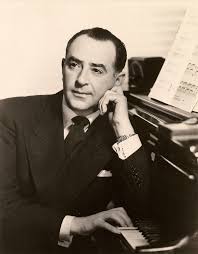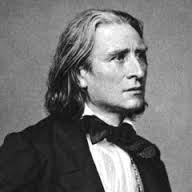“Music is a moral law. It gives a soul to the universe, wings to the mind, flight to the imagination, a charm to sadness, and life to everything. It is the essence of order, and leads to all that is good, just and beautiful, of which it is the invisible, but nevertheless dazzling, passionate, and eternal form.” Plato
Looking Back: Jakob Gimpel
If you have been following this blog, you will know that I hold in high regard artists of the past. It is on their shoulders we all stand. If nothing else, we can sometimes amuse ourselves by making connections, discovering stylistic trends or just enjoying remarkable playing—marveling at great facility captured before modern recording techniques began to homogenize taste.
 |
| Jakob Gimpel |
Polish pianist Jakob Gimpel studied with Eduard Steuermann, who was a pupil of Ferruccio Busoni, and Alban Berg. Berg! He made his debut at the age of 17 performing Rachmaninoff's second concerto in Vienna with the Concertgebouw Orchestra, conducted by Pierre Monteux. In the 1930s he emigrated to America for the usual reasons, settling in Los Angeles. In addition to concertizing and teaching, he recorded tracks for classic films such as "Gaslight," "Possessed," "Letter from an Unknown Woman," "Strange Fascination," "Three Stories of Love," and, in his later years, "Mephisto Waltz." There were also two classic cartoons: "Rhapsody Rabbit," in which he played a comically disrupted version of Liszt´s Second Hungarian Rhapsody, and the Academy-Award-winning "Johann Mouse," in which a virtuoso Tom played Gimpel's paraphrase of the "Blue Danube" while Jerry danced.
 |
| Franz Liszt |
In the link below Gimpel plays Liszt's "Waldesrauschen" and "Un Sospiro." Oh, did I say? He was one of my teachers at USC, and an inspiring one at that. His performance of Brahms' D Minor Concerto with the University Symphony was definitive. He took over Muriel Kerr's class after her sudden death the night before registration for the fall semester of 1963. One of my lessons occurred on the day JFK was shot, at the time news had just made it to campus. I found Gimpel in tears, beside himself with anguish. Needless to say, our lesson fell to the side, and Gimpel began to relate his personal experiences of extreme politics, which included a hair-raising account of how he and his brother, the noted violinist Brontislaw (student of Carl Flesch and one-time concert master of the Los Angeles Philharmonic), escaped from Europe at the start WW II.
I find these Liszt performances notable for their directly expressive, no-nonsense approach. Notice how his hands move with fluidity and flexibility, a practice I now refer to as shaping. Notice, too, that with such large hands he could get away with fingering octaves, a practice I don't recommend—ever, for any reason. Period. I never heard him complain of discomfort, although in those days performers didn't speak of such things. His technical advice to me was to play honestly, which I now realize was his way of telling me to work for technical ease, in addition to precision. He had about him a certain warmth of expression, and in his manner what I would describe as old world charm. One doesn't find that much these days.
Gimpel Plays Liszt


No comments:
Post a Comment